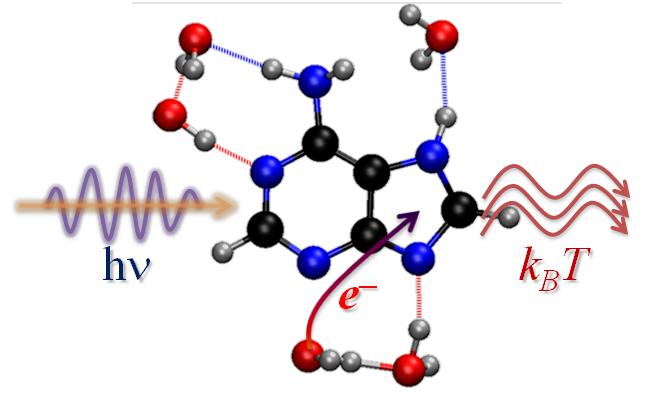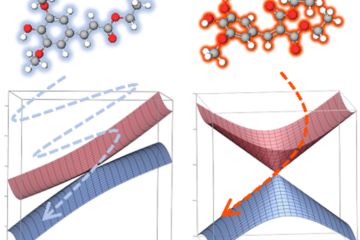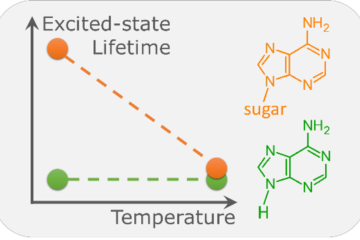A new internal conversion mechanism induced by electron transfer from solvent to chromophore has been revealed by dynamics simulations.
When a molecule absorbs light, it gets rid of the excess of the energy through one out of three ways: formation of new chemical compounds (photochemical reaction), re-emission of light (fluorescence or phosphorescence), or heat dissipation (internal conversion).
Internal conversion, in particular, is usually triggered by strong distortions of the molecular geometry and, for this reason, it may be inhibited within crowded environments, as protein pockets, where little space is left for geometric deformation.
I have just shown that an electron transfer from solvent molecules to the photoexcited chromophore can also induce internal conversion with little geometric distortion. Using computational dynamics simulations, I found out that when a specific tautomer of adenine (7H-adenine) in water absorbs UV radiation, it dissipates the photo-energy as heat after receiving an electron from a water molecule nearby.

After UV-excitation, dissipation of photoenergy in 7H-adenine in water is triggered by an electron transfer from the solvent to the chromophore. photoenergy
This result revealed an unknown internal-conversion pathway, with implications for the assignment of photo-reactions in biological environments and for the design of new organic photodevices. The work was published in a recent issue of the Journal of the American Chemistry Society.
Reference
M. Barbatti, Photorelaxation induced by water-chromophore electron transfer; J. Am. Chem. Soc., doi:10.1021/ja505387c (2014).
MB



1 Comment
Dynamics of UV-Excited Thymine-Water Cluster – Light and Molecules · August 12, 2018 at 2:53 PM
[…] Thus, it seems that water disturbs the system, but doe not really play an active role in the photochemistry, as we have seen in other cases. […]
Comments are closed.